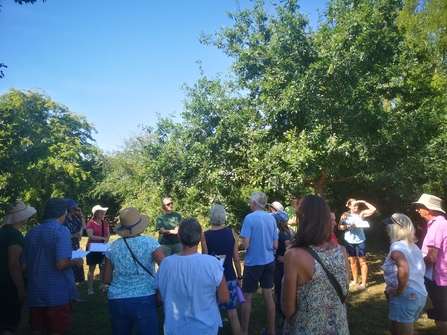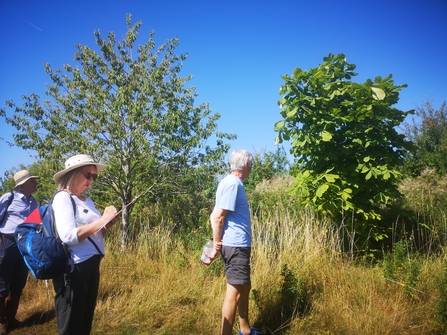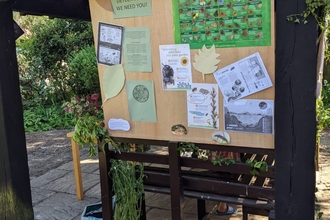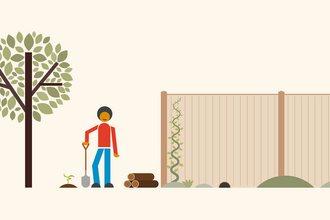Imagine a wilder world on your doorstep, with more nature everywhere in urban and rural areas. BBOWT returned to Shabbington, Buckinghamshire, to help members of their Nature Network survey an area of amenity grassland as part of Team Wilder.
Shabbington Nature Network launched in June 2021. A year later, members of BBOWT's Community Team met them to see how they were getting on, and to help them understand one of their focus areas, Millenium Field, a bit more by showing the group how to carry out a basic site survey.
This introduction to basic site surveying is a practical exercise aiming to give individuals the confidence to begin surveying a site and recording the findings.
By delivering this training BBOWT aims to show people that you don’t need to be an ecologist and have a full site species list compiled before you can think about working on your space.






